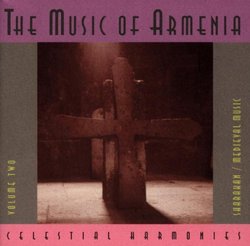Album DescriptionThis second volume in The Music of Armenia continues to present one of the world's most beautiful, most ancient, and most overlooked musical traditions. Sharakan is the name of a remarkable body of Armenian liturgical songs dating back at least as far as medieval times - songs that are remarkable not just for their antiquity, but for their exquisite, often heartrending melodies. As with The Music of Armenia, Volume One: Sacred Choral Music, this volume brings to Western audiences, in many cases for the first time, the unique blend of Eastern and European music that began to develop in Armenia in the early 5th century.The medieval songs of Armenia had their roots in both the sacred music of the Armenian Church and in the ancient bardic traditions of the Caucasus region. While some of this music is still presented in its original state, many older Armenian works exist today because of the tireless work of the turn-of-the-century composer and musicologist known as Komitas. The Music of Armenia, Volume Two: Sharakan spans fifteen centuries of Armenian music, and Komitas' presence can be deeply felt in some of the arrangements. In many of these songs, though, conductor Daniel Erazhisht has wedded the exotic, often melancholy lyricism of the Near East to the classical purity of a European chamber ensemble, consisting of string quartet, voice, and flute. As a result, the sound is immediately accessible to Western listeners, even as the melodies capture the ear with their surprising arabesques.Several instrumental tracks featuring the traditional Armenian lute, or tar, are also included; but perhaps the most striking song in the collection is an almost cantorial work for voice and piano; Horzham, from the Divine Liturgy of Komitas' teacher Makar Yekmalian, suggests the common roots of early Jewish, Eastern Christian, and Islamic singing.The Music of Armenia is a six volume set; this second volume, though, may be the one that most directly communicates the tragedy, the resilience and the faith of the Armenian people.


 Track Listings (22) - Disc #1
Track Listings (22) - Disc #1